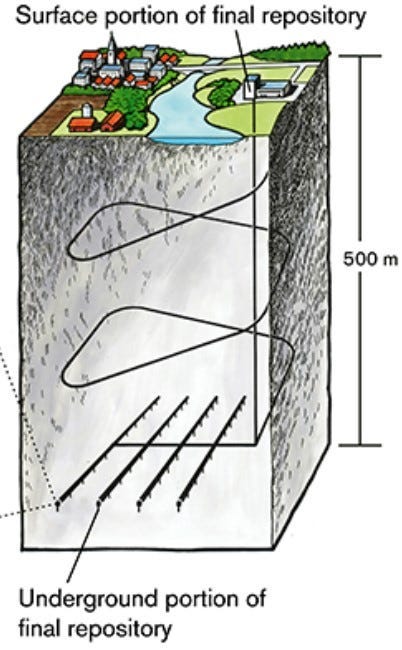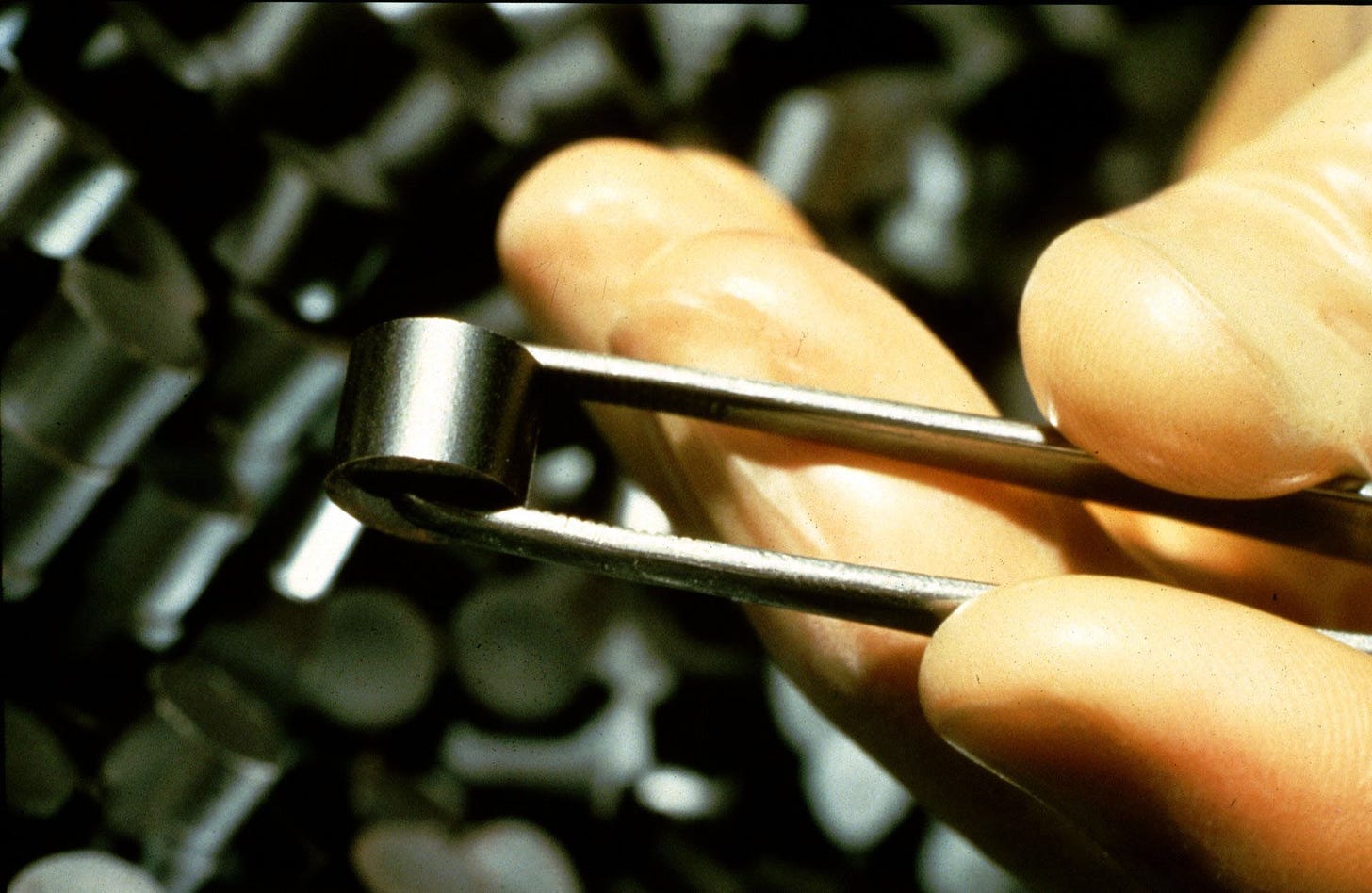Can harmful radioactivity escape from a deep geological repository?
the fight against groundwater | heat can complicate things.

This reading is part of a series: Nuclear Waste Disposal
The surface of the earth is ever-changing. Things are constantly evolving with time. Eroding with it. And dying and decaying because of it. But deep underground, there is a sense of preservation. Time almost stops. The geology changes very slowly and has remained virtually unchanged in many places over the past millions of years - long compared to the life of hazardous radioactive waste [1]. A geological repository aims to utilize this fact to isolate nuclear waste from the above-ground environment.
Most designs of geological repositories call upon multiple barriers to ensure the safe isolation of nuclear waste deep underground. The redundancy aims to elicit confidence in the design. The multi-barrier approach incorporates the properties of the fuel, the engineered barriers, and the properties of the host geology. The system is redundant and diversified and is designed to isolate the waste safely even if one of the barriers is defective [2].
Further discussion on the multiple barriers employed can be found here: (link)
Transport mechanism for the radioactivity:
Geological disposal is an attractive solution for isolating nuclear waste because it offers the ability to distance the above-ground biosphere from the waste. The vast landmass between the surface biosphere and the waste acts as a barrier. It makes unintentional exposure of future generations very difficult.
It also makes the waste more secure as it would take sophisticated equipment to dig deep and extract the waste, something that cannot be done in secrecy.
However, the physical barrier only works if there is no other way for the harmful radionuclides to escape from the repository. The most likely way this could happen is by groundwater. Groundwater could seep into the repository, corrode the waste canisters, and carry the radionuclides to the surface, where the contaminated water might be used for drinking or agriculture [3].
Spent nuclear fuel doesn't dissolve easily:
Spent fuel is a porcelain-like ceramic material that is highly insoluble in water. In the worst-case scenario, only fractions of a tenth of a percent of the fuel will dissolve each year [4]. Even if that happens, the radionuclides mobile in the water must find their way to the surface in sufficient quantity. Geologic disposal sites are selected where the groundwater flow is extremely slow [2]. This means that even if the radionuclides find their way to the surface, they will be highly diluted by the groundwater.

But...
Heat is a complication in repository design. Nuclear waste is hot, literally. The heat emitted is highest when the spent fuel exits the reactor and then reduces as the radioactivity falls.
Initially, the decay heat falls rapidly. This happens for 40 to 60 years, after which it slows down when decay heat is controlled by actinides such as americium-241, which has a half-life of 432 years [1].
Heat speeds up chemical processes like corrosion and dissolution, and thermal convection could increase the movement of water.
This means the repository temperature must be controlled by spreading the waste over a larger area [1]. The more heat there is, the more the waste will have to be spread out, requiring a larger repository that will cost more. This is precisely why storing waste in interim storage for a few decades is considered beneficial.
A point of view:
The initial idea in pursuing underground geological disposal was that the geological barrier would be sufficient by itself to isolate the waste. However, this has long proved to be a challenge. Whether it be the volcanic tuff at Yucca Mountain, granite at Onkalo, or attempts to emplace in bedded salt, the geology alone has proved insufficient, and each site has required engineering solutions in the form of robust canisters as barriers against groundwater intrusion [5].
The aim of the multiple barriers is to delay groundwater from reaching the waste. The redundancy not only overcomes shortcomings of any individual barrier type but also aims to engender confidence that if one barrier fails to work as intended, the various other barriers will continue to offer protection. And even in the case of multiple failures, partial protection would still be provided if even one barrier is functional. Such a system has a high tolerance and lacks any single point of failure.
References:
[1] MIT, “The Future of the Nuclear Fuel Cycle,” Massachusetts Institute of Technology, 2011. [Online]. Available: https://energy.mit.edu/research/future-nuclear-fuel-cycle/
[2] A. Hedin, “Spent nuclear fuel - how dangerous is it? A report from the project ‘Description of risk,’” Swedish Nuclear Fuel and Waste Management Co., Stockholm (Sweden), 1997. [Online]. Available: http://inis.iaea.org/search/search.aspx?orig_q=RN:29015601
[3] MIT, “The Future of Nuclear Power,” Massachusetts Institute of Technology, 2003.
[4] SKB, “SR 95. Template for safety reports with descriptive example.,” 1995. [Online]. Available: https://www.skb.com/publication/12056
[5] H. Feiveson, Z. Mian, M. V. Ramana, and F. von Hipple, “Spent Fuel from Nuclear Power Reactors: An Overview of a New Study,” International Panel on Fissile Materials, 2011. [Online]. Available: https://fissilematerials.org/library/ipfm-spent-fuel-overview-june-2011.pdf
